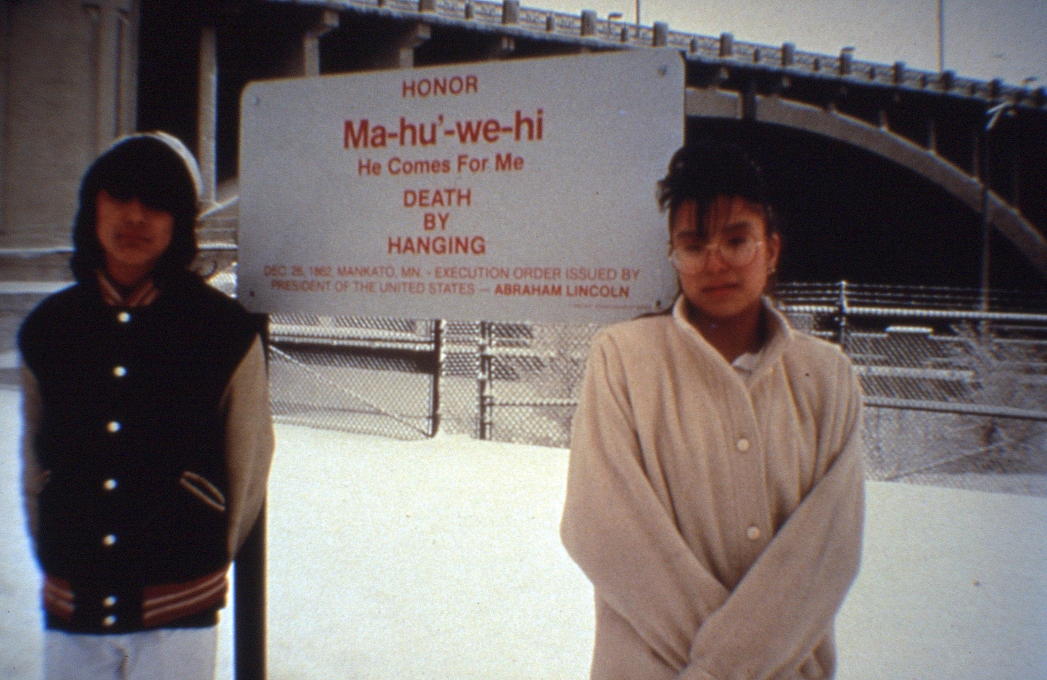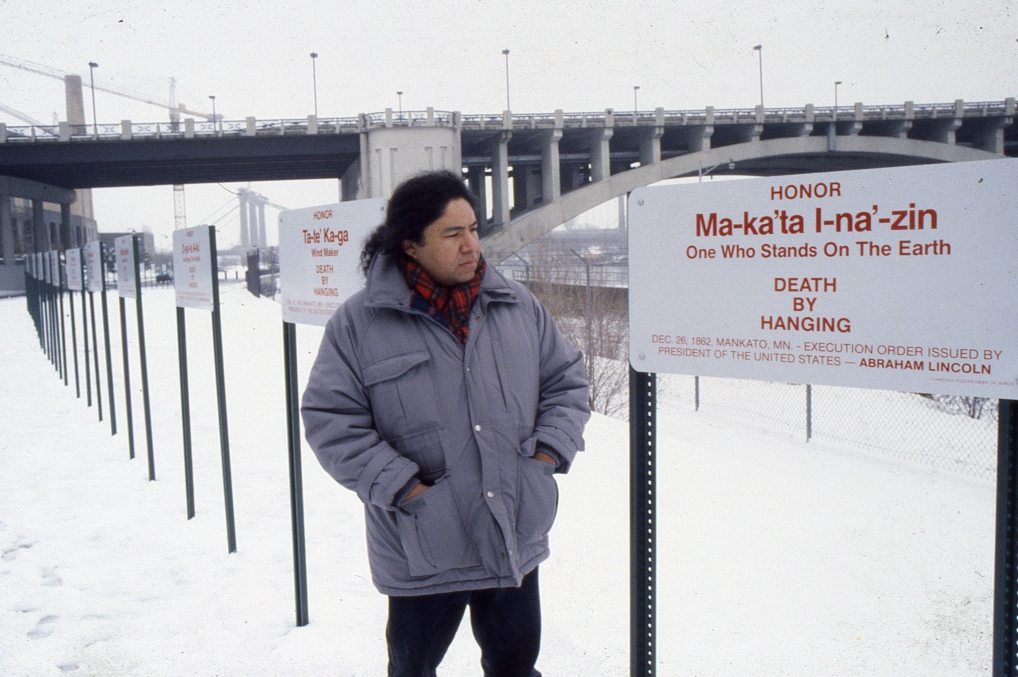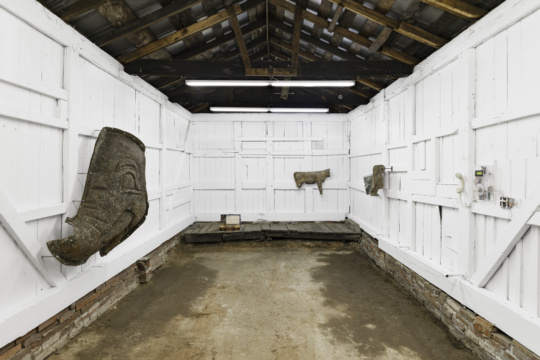Georgia, today your native hosts are Cherokee, Yuchi, Miccosukee, Shawnee, and countless others whose names are lost.

Hock E Aye VI—also known as Edgar Heap of Birds—is an artist of Cheyenne and Arapaho ancestry, best known for his public artworks across the United States correcting the established language around ownership, history, and geographic orientation. His Native Host series is comprised of large roadway-style signs that disorient our territorial understanding, reminding us that these places where we live had names long before we arrived or renamed them ourselves. In 1990, Hock E Aye VI completed Building Minnesota at the Walker Art Center in Minneapolis, memorializing the forty Dakota men who were sentenced to death after the Dakota Conflict of 1862, which remains today the largest mass execution in American history. Archival photos of the Building Minnesota project are haunting and devastating. Two Native teenagers stand under the sign bearing the name Ma-hu’-we-hi, whose name means He Comes For Me, and the sentence handed down, DEATH BY HANGING. The pose of the children is resigned. Though their eyes are hidden by their dark hair, their gaze is damning.
When I was a teenager living in Denver, I dated an Akimel O’odham (also known as Pima) Indian. The most famous Akimel O’odham is probably Ira Hayes, one of the flag raisers at Iwo Jima—just one incident from the long history of nonwhite people fighting and dying for a country that fundamentally disregards them. Together we went to the Denver Art Museum, where Aye VI’s Wheel had been installed on the front lawn. We walked around the ring of forked poles multiple times and then went inside the museum. My boyfriend grew more and more agitated until he could not go any farther. I cannot quote the incident from more than fifteen years ago, but I can sum it up. How can they just put those things in there, under glass, as if it isn’t all stolen and covered in blood? I’m standing right here. This is mine. His reaction has stayed with me all these years, and it’s been echoed in popular discussions about repatriations of art across the world, and even dramatized in the opening scenes of Black Panther. After asking a flippant and bored curator about various African masks and artworks, eventually identifying an object of Wakandan origin, Erik Killmonger snarls, “How do you think you got these? You think your ancestors paid a fair price for them? Or did they just take them?”

Hock E Aye VI’s public artworks, paintings, and other works remind us that we walk freely on stolen land, that others were forced, by gunpoint, to leave the places where many of us make our homes. As we enter 2020, Native communities face the highest rate of suicide, unemployment, drug abuse, poverty, and domestic violence in the country. The Treaty of Echota, signed in Georgia in 1835—if it is remembered at all—is remembered for the creation of the Trail of Tears. This summer, the Cherokee Nation invoked the Treaty of Echota again, demanding that the United States uphold their long-awaited end of the bargain and give the Nation a delegate in the House of Representatives. (Non-voting delegates from Washington D.C., Puerto Rico, Samoa, and the Mariana Islands are already part of Congress.) If the Cherokee Nation sends a delegate to the House of Representatives, it will represent more than just another voice in Congress. It will remind Americans that there are sovereign nations contained within ours, that the people who stood at Standing Rock were not just concerned about the pollution of rivers and streams but were acting within their rights as citizens of a sovereign nation, people who are tired of the ignorance, the lack of care, and complete apathy they have received for centuries.
There is no doubt we are in a crisis here. The people who cared for these lands before our ancestors arrived here—or, for people like myself, who were forced here— owe us nothing. The absurd festivity of the Thanksgiving holiday is an insult heaped upon injury. But instead, Native communities are working to save this land, the birds and rivers and lakes and oceans and fish and deer and life they have known since before our time began, and making sure their stories are heard in every re-telling of all of our myths. For these efforts, for our shared traumatic history in this country, for reminding me that we’re still here, I am incredibly thankful.
For further reading about how artists and cultural institutions are working to incorporate Native and Indigenous histories into narratives of American art, revisit this conversation between curators Allison Glenn and Marina Fokidis and contributor Sara Lee Burd.




